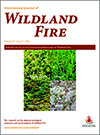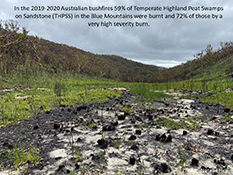International Journal of Wildland Fire
Volume 30
Number 4 2021
Guidelines for the appropriate evaluation and comparison of wildland fire occurrence prediction models are outlined, including choosing a testing dataset, choosing metrics for model evaluation, using visualisations to qualitatively assess model performance, recognising the variability in performance metrics, and collaborating with end users to ensure models meet their operational needs.
This work assesses the leading causes of wildfire propagation using multivariate statistical analysis. We identify which, and to what extent, environmental and socioeconomic characteristics affect wildfire spread. The findings are helpful for wildfire prevention and containment. The setting is Portugal, a Mediterranean country.
In the Sierra Nevada of California, annual prescription burning began in 1968 in Sequoia–Kings Canyon national parks. It was unique at the time owing to coupling planned prescribed burns with prescribing limited suppression of lightning-ignited fires in remote areas, which were allowed to burn for resource benefits. The history of this program is compared with adjacent USFS national forests.
Wildfires are an important driver of land degradation, since they can have detrimental impacts on soil properties, usually leading to decreasing soil fertility and erosion, which affect vegetation recovery. This study investigates the long-term impact of wildfires on topsoil horizons, where land degradation is causing significant economic and ecological losses. This study shows that wildfires can have long-term impacts on topsoil horizons and vegetation in limestone areas, threatening the sustainability of forest ecosystems.
Four studied moss and lichen species were found to dry at different rates, thus having different ignition potential and fire risk. Stand type, and particularly developmental stage, also affected drying rates. Fire risk indices could be improved by using these variables, which could benefit fire prevention.
The Australian fires of 2019–20 severely affected the upland peat swamps of the Blue Mountains. Over 59% of swamps were burnt and 72% of those experienced a very high severity burn. We analyse the spatial distribution and severity of the fires on these endangered ecological communities.
Straw mulch is a common post-fire treatment to mitigate runoff and erosion risk, although information about the effect on vegetation recovery is still scarce. Overall, the mulching treatment did not have significant effects on vegetation cover, species composition and biomass accumulation 5 years after fire.






